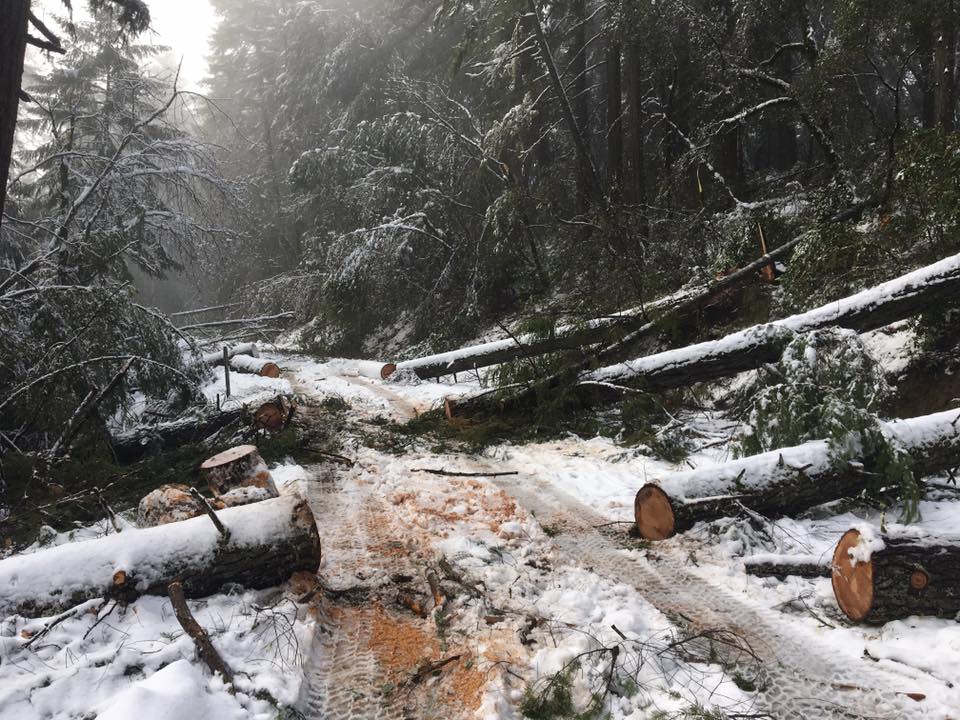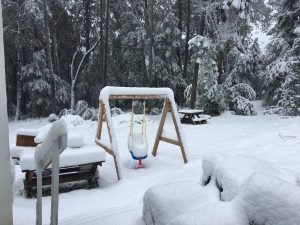
Salmon River Road in early January. Photo by Aja Conrad.
Weather has been much on our minds lately because there’s been so much of it. The Food Security Project includes research on the barriers to accessing healthy, culturally appropriate food. Our gardens need water and sunshine, and our cultural terrestrial foods require cool, slow burns, but what about when the weather itself is a barrier? This year, after yet another summer of drought and catastrophic wildfires, our changing climate brought the Klamath Basin record rains, river flooding and unusually heavy snow. Icy roads, downed trees and landslides made it challenging for people to travel to work, school and to the store for food.

First March weekend in Orleans, CA. Photo by Kimathi Mucioki.
Climate change is also affecting Tribal access to cultural foods – and the local economy. The past two years saw salmon at such record lows that the Yurok Tribe did not serve salmon at the annual Klamath Salmon Festival, a first – not to mention closing its commercial fishery. Right now, a local mussel quarantine is in effect due to a biotoxin that accumulates in warmer ocean temperatures, and is not usually present so early in the year.
In times like these, a pantry full of canned fruits, vegetables, fish, and meats, or baking your own bread is more than just fun and satisfying – these skills can be survival skills.